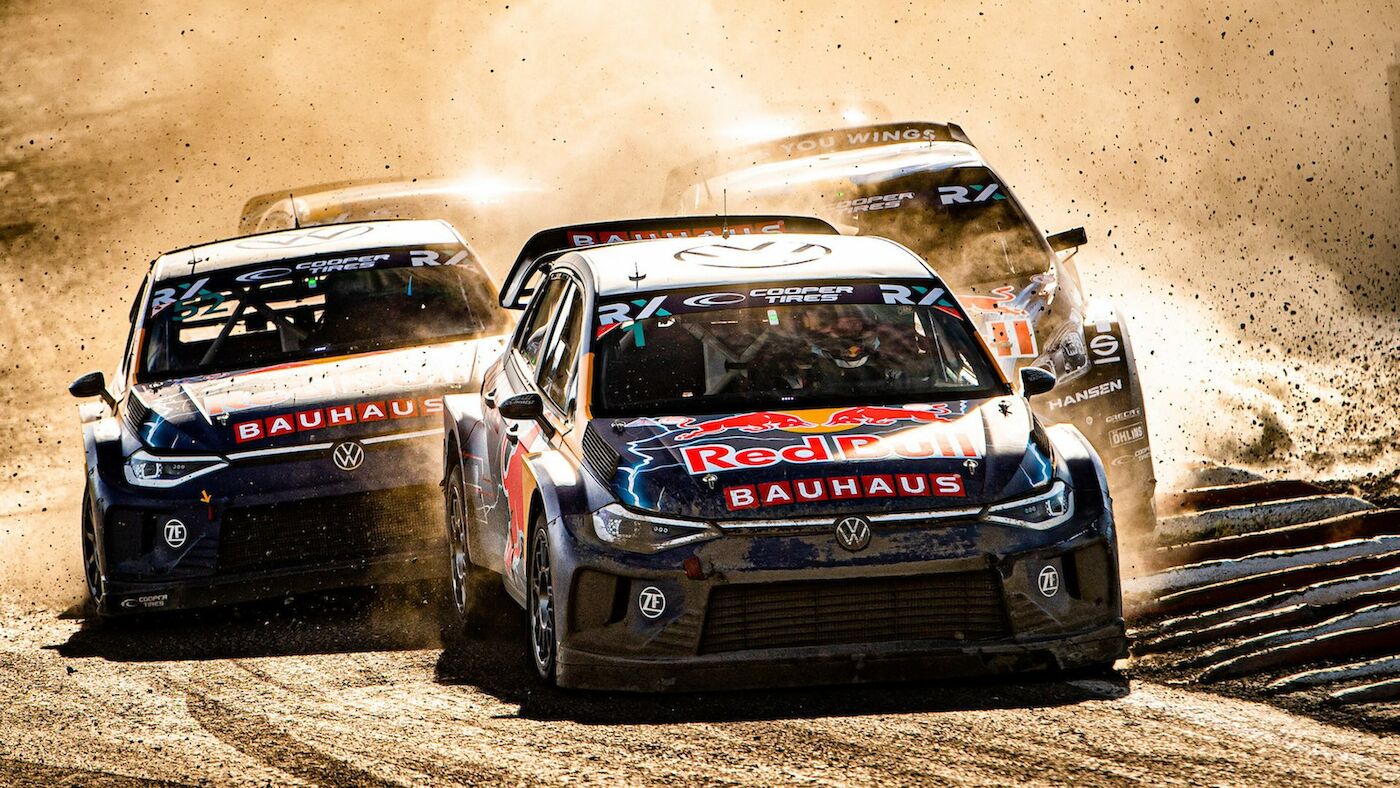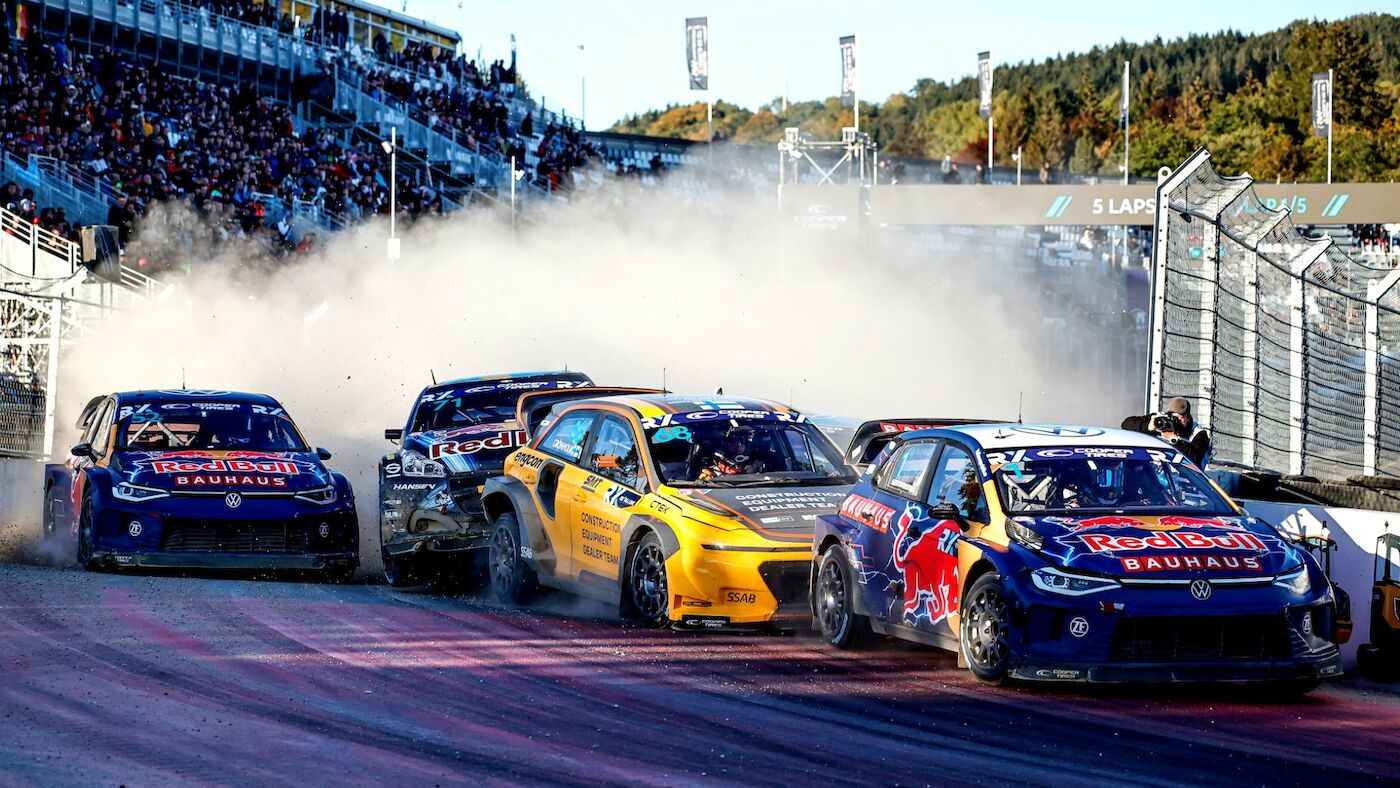What is Rallycross?

What is Rallycross?
Rallycross is a combination of rallying and circuit racing. It is head-to-head short, sharp races on mixed surfaces (dirt and asphalt) contained within amphitheatre venues.
Launched in 2014, the FIA World Rallycross Championship represents the pinnacle of the dual-surface discipline – originally created back in 1967 – and in 2022, the series embarked upon a new electric era in which all entrants compete with identical powertrains, supplied by Austrian manufacturer Kreisel.
With 500kW delivered to the twin motors – equivalent to 680bhp – and 880Nm of instant torque at the touch of a pedal, these are the most powerful World Rallycross cars ever produced, boasting eye-watering acceleration faster even than Formula 1 while retaining the easily recognisable production car bodyshells synonymous with the sport.
The World Championship is supported at selected events by the FIA RX2e Championship and FIA European Rallycross Championship for RX1 and RX3 cars.
World RX Season Launch 2022: News Clip
Racing
- Each event is made up of Practice sessions, a SuperPole shootout for World RX and Qualifying Practice for RX2e, up to four rounds of Heat races, two knockout Semi-Finals and the all-important Final
- SuperPole – in which all competitors complete a single timed lap from a standing start – and Qualifying Practice, which takes the form of a four-lap run for each car, determine grid positions for Heat One in World RX and RX2e respectively; in Euro RX1 and Euro RX3, starting positions are decided by a random draw carried out in advance of the first Heat
- Single-header events comprise four Heats, reduced to three for double-headers
- Each Heat features a number of races (depending on total number of entries), comprising a maximum of five cars in each race, starting line-abreast and contested over five laps
- Finishing times in Heat races determine the starting positions for the following Heat, in which the fastest drivers are grouped together, then the next-fastest and so on
- The Classification at the end of each Heat is established by total race time (so for example, a driver who places 4th in race one with a finishing time of 3m00s will rank higher than a driver who finishes 1st in race two with a slower time of 3m05s); this encourages drivers to go as fast as possible even if they have a big lead. The fastest driver in the Classification scores 50 points, second-fastest 45 points and so on. These points count towards the intermediate Ranking at the end of all the Heats
- The top three drivers in the Ranking are awarded Championship Points (3 points for 1st place, 2 points for 2nd place and 1 point for 3rd place)
- The top 12 drivers from the Ranking proceed to the Semi-Final phase, with those in odd-numbered positions competing in the first Semi-Final and even-numbered positions contesting the second Semi-Final
- The top three finishers in each Semi-Final advance to the Final. The positions in the Ranking determine which of the Semi-Final winners starts on pole position (the same logic is applied to the 2nd and 3rd-placed finishers)
- Unlike the Heat races, the Semi-Finals and Final adopt a staggered two-by-two grid formation; the length of the races is still five laps
Championship Points
- Championship Points are awarded at the end of the event, according to the following breakdown from 1st place down to 15th: 20-16-13-12-11-10-9-8-7-6-5-4-3-2-1. The top six finishers are based on the results of the Final; 7th to 12th are the remaining Semi-Finalists, with ties determined by the Ranking order. The remaining points go to the drivers placed 13th to 15th in the Ranking
- All points scored in every round of the season count towards a competitor’s overall score
- The Teams’ Championship is open to World Championship teams fielding two cars, and includes all points scored by both of the team’s drivers at each event


